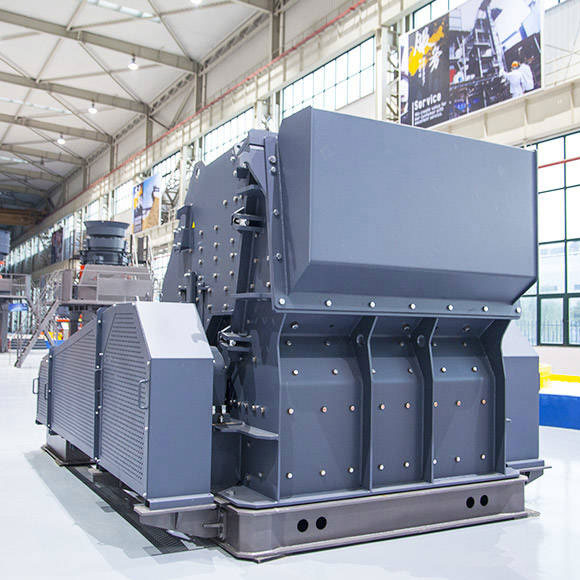A secondary impact crusher is a type of crushing machine used in the mining and aggregate industries to reduce the size of non-metallic ores. It plays a crucial role in the ore processing and beneficiation process by breaking down large chunks of ore into smaller, more manageable pieces. In this article, we will delve into the key aspects of secondary impact crushers for non-metallic ores.

Purpose and Function:
Secondary impact crushers are designed to handle the secondary crushing stage in the ore processing flow. After the primary crusher has initially reduced the ore size, secondary crushers further reduce the ore to the desired size for downstream processes. They achieve this by applying high-speed impact forces to the ore material.
Operating Principles:
Secondary impact crushers typically operate on the principle of rapid impact and collision. The ore is fed into the crusher’s chamber, where it encounters rapidly rotating hammers or blow bars. These hammers or blow bars strike the ore, breaking it into smaller pieces. The high-speed rotation ensures efficient reduction of the ore size.
Design Features:
Rotor: The rotor is a critical component of the crusher, and its design varies depending on the manufacturer and specific application. It typically houses the hammers or blow bars that deliver the impact forces.
Impact Curtains or Plates: These are adjustable plates or curtains located in the crusher chamber. They control the size of the final product by adjusting the clearance between the impact curtains or plates and the rotor.
Feed Chute: The feed chute directs the ore material into the crusher chamber, ensuring a consistent and controlled feed rate.
Benefits of Secondary Impact Crushers for Non-Metallic Ores:
Efficient Ore Reduction: Secondary impact crushers are highly efficient at reducing the size of non-metallic ores, ensuring that valuable minerals are liberated from gangue materials.
Versatility: These crushers can handle a wide range of non-metallic ores, including limestone, granite, basalt, and more. Their versatility makes them suitable for various mining and aggregate applications.
Cubical Product Shape: Secondary impact crushers are known for producing well-shaped, cubical end products. This is advantageous for industries where a specific product shape is required.
Applications:
Secondary impact crushers are commonly used in various applications, including:
Mining: These crushers are essential in the mining industry for reducing the size of ore before it is sent for further processing.
Aggregate Production: In the aggregate industry, secondary impact crushers are used to produce high-quality aggregates for construction and infrastructure projects.
Cement Production: Non-metallic ores like limestone are crushed to a suitable size for use as raw materials in cement manufacturing.
Maintenance and Safety:
Proper maintenance of secondary impact crushers is essential to ensure their longevity and safe operation. Regular inspections, lubrication, and replacement of wear parts are crucial. Safety precautions, such as lockout/tagout procedures, should be followed when performing maintenance tasks.
Secondary impact crushers for non-metallic ores are indispensable machines in the mining and aggregate industries. Their efficient ore reduction capabilities, versatility, and ability to produce well-shaped final products make them valuable assets in ore processing and material production. However, their proper maintenance and adherence to safety and environmental standards are essential to ensure their effective and responsible use in various industrial applications.
